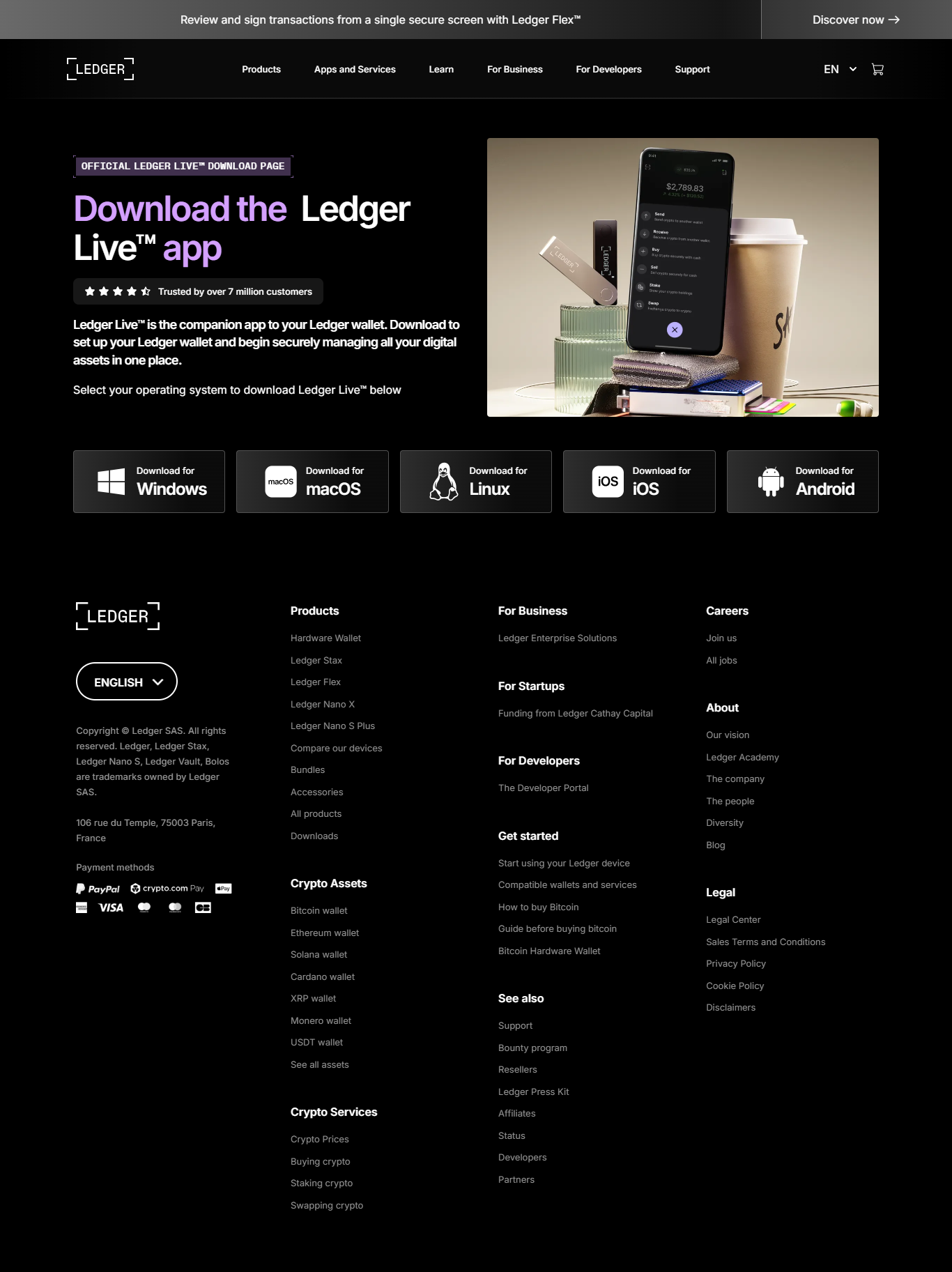This guide explains, in a formal and practical manner, how to approach the initial setup and ongoing management of hardware wallets — specifically Ledger devices — using the Ledger Live application. Hardware wallets are designed to store private keys within a tamper-resistant environment and to offload cryptographic operations (such as transaction signing) onto a device that minimizes exposure to hostile software. That said, a secure custody posture combines the integrity of the hardware, the provenance of the software, and disciplined operational processes.
Begin by confirming the provenance of your device and the software you will install. Genuine devices should be purchased directly from reputable vendors or the manufacturer's authorized channels. For software, always download Ledger Live or any related installers from the primary domain associated with the vendor (verify the exact domain in official documentation). Download pages normally publish cryptographic checksums and digital signatures: use them. On macOS, Linux, and Windows, running checksum commands (sha256sum, shasum -a 256, or PowerShell Get-FileHash) and verifying signatures with PGP or other provided mechanisms is a straightforward and highly recommended practice.
During device initialization you will be prompted to generate a PIN and a recovery phrase (commonly 24 words). This recovery phrase is the canonical backup of your seed — it reconstructs the private keys for your accounts. It must be treated as the most sensitive secret you possess. Record it physically (do not photograph or store it electronically), place backups in physically separated and secure locations, and consider hardened storage options (metal seed plates, safe deposit boxes) for high-value custody. Anyone who obtains your recovery phrase can recover and control your funds regardless of who holds the physical device.
Ledger Live serves as the user-facing management application that communicates with the device. It simplifies common tasks: adding accounts, monitoring portfolio balances, installing blockchain-specific applications on the device, and initiating transactions. Crucially, transaction details are presented on the device screen before signing — a design that prevents a compromised host from stealthily altering transaction recipients and amounts without the user's explicit visual approval on the hardware.
Operational best practices extend beyond initial setup. Maintain up-to-date software and firmware, subscribe (or periodically review) official release notes for security advisories, and adopt multi-layered defenses: segregated operational workstations, limited exposure to risky software, and multi-signature or institutional custody solutions for high-value or business assets. For organizations, implement lifecycle management (device inventory, firmware update policies, access controls) and ensure that contingency and recovery plans are tested periodically.
Finally, this guide is educational. It is not a substitute for personalized legal, tax, or investment advice. Cryptocurrency holdings are subject to market volatility and regulatory changes. This content is provided to increase awareness of security-relevant practices when using hardware-backed key custody. For vendor-specific operational details, verification instructions, and support channels, consult the vendor's official documentation and support pages directly.
